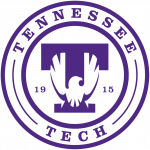It’s been a good week at Tennessee Tech by the numbers. Our first national rankings in U.S. News & World Report came, followed closely by news of a significant jump in our freshman retention rate.
As exciting as it is to share these numbers, it takes context and backstory to see how these numbers matter and shape our future. Marilyn vos Savant cautions, “Be able to analyze statistics, which can be used to support or undercut almost any argument.” Over the next few months, we’ll have ongoing discussions about the elements of our national ranking, but for now let’s look at what the retention rate increase really says about our campus.
Tech’s one-year retention rate for our cohort of first-time, full-time freshmen in Fall 2015 was 79 percent, by far, the largest one-year retention rate in the past 20 years.
This increase from the previous six year average of 74 percent is a result of vision, change, teamwork and hard work.
Though we were the envy of many regional universities at around 74 percent, we looked at what it would take to move the needle. Our Flight Plan goal, set three years ago, aspired to rise to 80 percent in five years.
Enrollment Management leadership asked that we put resources and focus on two areas: student class attendance and a support system that allows advisors to give excellent service to students.
In fiscal year 2013, we committed resources for the next year to hire 15 professional advisors and create a director of advisement services, a director of retention services and a director of military and veteran’s affairs. In 2014, colleges and professional advisors worked together to create a retention strategy centered in Student Success Centers in each college.
We found opportunities to use people involved in the student life cycle so that we had a long view of how advice and decisions would affect students throughout their college careers.
Creating a culture of student success before the first semester is key, so leaders worked together to create SOAR sessions that set high expectations and gave information so students know when and how to ask for help.
We also have seen a positive effect from preset schedules given to incoming freshmen. Since Summer 2013, we’ve had an 11 percent increase in the number of hours these students attempt, plus an almost 5 percent in increase in the number of these students above a 2.0 GPA, an important threshold in retention.
A registration campaign, which directs intentional contact with students who don’t register for their next semester classes by a certain time, has helped students overcome barriers to staying enrolled.
Through Freshman Flight Path, we contact about 600 freshmen per semester when they miss class. They may get an email, phone call or face-to-face visit from a resident assistant.
I’ve heard great stories about how RAs find ways to help students. If a student says they oversleep, some RAs set their own alarm clocks so they can go wake students up, even if they don’t have class, to help them develop a pattern of getting up on time.
One RA noticed several students were missing the same math class, a class the RA had taken, so he created an informal mini study group to help them with that class.
We continue to hear from our successful students that when they needed help, a genuine community of faculty and staff cared for them and helped them.
The great news is there are so many people involved in this success story across campus as Provost Ghorashi mentioned earlier this week in his note to the campus community. Thank you to every faculty and professional advisor who committed to our new approach. Thank you to support staff, resident assistants, admissions staff and orientation leaders. I want to particularly congratulate and thank Enrollment Management leadership, Bobby Hodum, Melissa Irvin and Julie Longmire. Great Job!
Go Eagles!






